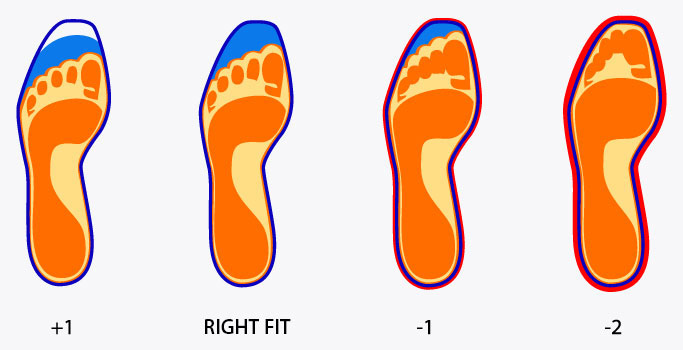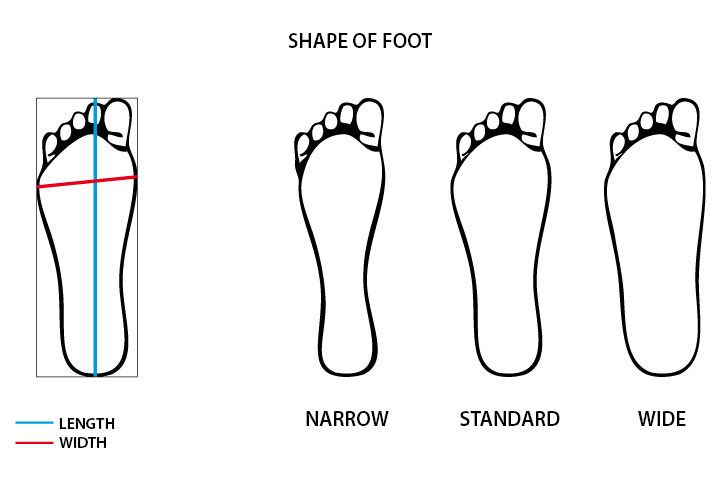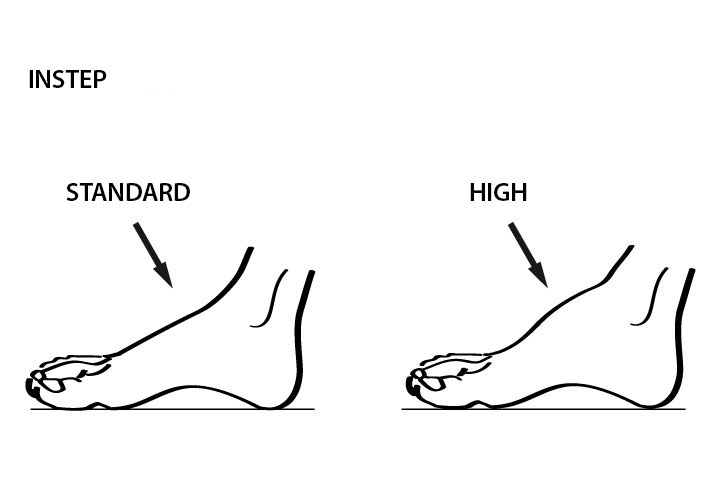How to measure your child’s foot correctly
In the first few years of life, the child’s foot is constantly developing and will continue to grow until adolescence.
It is, therefore, very important to choose the right size, bearing in mind that infants cannot talk and older children are often influenced by the appearance of the shoe rather than by the practical aspects.
Another factor that should not be overlooked is that every shoe brand has its own fit due to the shape and the way it has been produced. There is, therefore, no standard size. In every product technical data sheet, you will find the indications to help you choose the correct size.
Lastly, although our advice may be considered somewhat biased, we suggest that you do not buy shoes that are too big or delay replacing shoes that are too small in the hope of getting more use out of them, both of which are not good for your children.
Measuring the foot
For the length of the foot, here is a simple table which compare the shoe size and the foot length.
Size table
| CM | EU | US | UK |
|---|---|---|---|
| 10 | 18 | 2/C | 2 |
| 10,5 | 18,5 | 3C | 2.5 |
| 11 | 19 | 3/C | 3 |
| 12 | 20 | 4C | 3.5 |
| 12 | 20,5 | 4/C | 4 |
| 12,5 | 21 | 5C | 4.5 |
| 13 | 22 | 5/C | 5 |
| 13,5 | 22,5 | 6C | 5.5 |
| 14 | 23 | 6/C | 6 |
| 14 | 23,5 | 7C | 6.5 |
| 14,5 | 24 | 7/C | 7 |
| 15 | 25 | 8C | 7.5 |
| 15,5 | 25,5 | 8/C | 8 |
| 16 | 26 | 9C | 8.5 |
| 16 | 26,5 | 9/C | 9 |
| 16,5 | 27 | 10C | 9.5 |
| 17 | 28 | 10/C | 10 |
| 17,5 | 28,5 | 11C | 10.5 |
| 18 | 29 | 11/C | 11 |
| 18,5 | 30 | 12C | 11.5 |
| 18,5 | 30,5 | 12/C | 12 |
| 19 | 31 | 13C | 12.5 |
| 19,5 | 32 | 13/C | 13 |
| 20 | 32,5 | 1Y | 13.5 |
| 20,5 | 33 | 1/Y | 1 |
| 20,5 | 34 | 2Y | 1.5 |
| 21 | 34,5 | 2/Y | 2 |
| 21,5 | 35 | 3Y | 2.5 |
| 22 | 35,5 | 3/Y | 3 |
| 22,5 | 36 | 4Y | 3.5 |
| 22,5 | 37 | 4/Y | 4 |
| 23 | 37,5 | 5Y | 4.5 |
| 23,5 | 38 | 5/Y | 5 |
| 24 | 39 | 6Y | 5.5 |
| 24,5 | 39,5 | 6/Y | 6 |
| 25 | 40 | 7Y | 6.5 |
| 25,5 | 41 | 7/Y | 7 |

DO YOU WANT TO WORK OUT THE EXACT SIZE?
Download and print our tableThe important thing, however, is to consider that the length must take into account the margin of foot growth. Therefore, for small children, you should add a good centimetre (physiology specialists recommend 13 mm) to the length from the back of the heel to the tip of the big toe, to allow the foot a natural space in which to grow.

As the child grows and the speed of foot growth slows, this figure can be reduced slightly, but a margin for growth should always be factored in.
Identifying the shape
By the shape of the foot, we mean the size of the foot expressed not only in length, but also in width and height. There are slim feet and chubby feet, and not all types and shapes of shoes are suitable. In some cases, the foot may “slip” out of the shoe while in others, it may be too tight, instead of encasing it properly.
The sole

Identify the sole of your child’s foot by drawing it on a sheet of paper and comparing it to the image shown here.
The data sheet for each model indicates the best shoe for the specific sole.
All the shoes are suitable for a standard sole.
The instep

Identify the type of instep for your child by observing it and comparing it with the drawings shown here.
The data sheet for each model indicates the best shoe for the specific sole.
All the shoes are suitable for a standard sole.
The calf
Finally, if you wish to purchase a pair of boots, you should also consider the calf size. How to measure the calf.
Measure the length of the child’s calf from under the kneecap to the instep, and the width at the widest point of circumference.
Divide the circumference by the length and compare the result with the following table:
| Less than 0.90 | Between 0.90 and 1.20 | Over 1.20 |
|---|---|---|
| SMALL | STANDARD | LARGE |
You will find the icons in each boot data sheet which indicated the best model for the specific calf size. All models are suitable for standard calf size.

